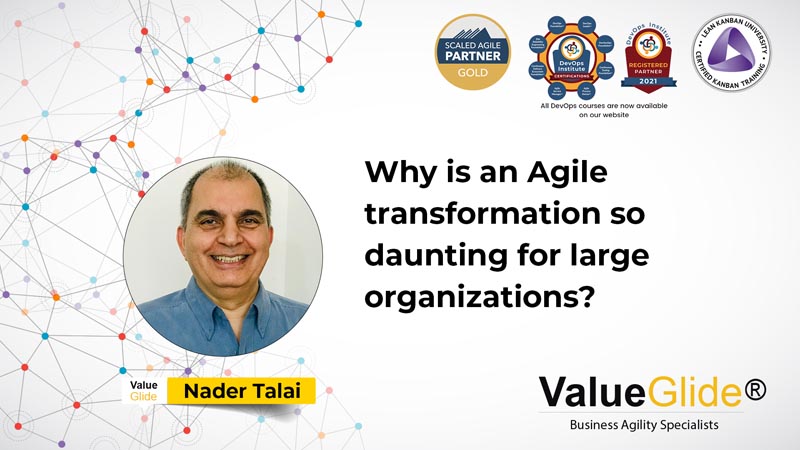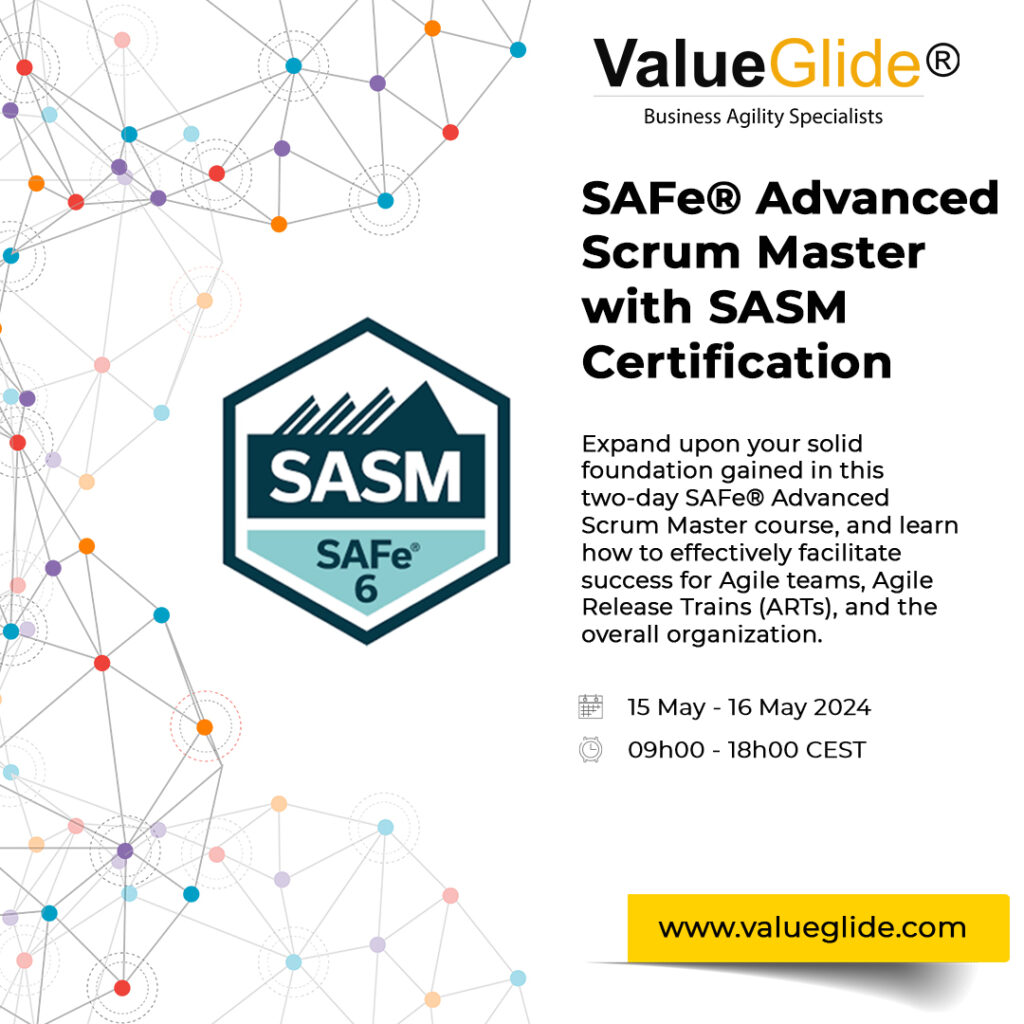Why is an Agile transformation so daunting for large organizations?
There are several reasons why change can be daunting for organizations, but in my experience, it often boils down to 5 primary challenges that organizations and individuals need to work through.
- People need to think, work, and behave differently.
- People may lack the support of executives, senior managers, and leadership teams.
- Thinking of Agile as a destination rather than a journey
- Too much change in way too little time.
- Failing to communicate the reason for change.
The need to Think, Work, and Behave Differently
The primary reason why it’s so daunting is because agile transformations require people to think and act differently. It requires a significant shift in organizational culture and creates a strong sense of accountability on individuals, teams, and leadership teams.
Regardless of the size of your organization, that kind of change is daunting for everyone.
Often, people think of an agile adoption as being the adoption of a new set of tools or processes, which it does require, but it is first and foremost about the change we witness in individuals.
Lack of support from executive and leadership teams
In many instances, the teams who adopt agile and undergo an agile transformation, don’t have the support of the executives and senior leadership teams within the organization.
You will often hear agile coaches and business agility experts claim that a successful adoption needs more than leadership buy-in, it actively needs leadership to champion the transformation and help solve organizational and systemic problems that are beyond the influence and control of teams.
So, you may have leaders or senior managers paying lip service to the agile transformation, but they don’t actively provide the support or fix the most compelling problems needed for a team to thrive.
If the team have elected to adopt agile, they can deal with that kind of friction relatively well and still succeed in adopting agile. If agile or SAFe has been imposed on them, that kind of friction can be the straw that breaks the camel’s back.
A journey to business agility.
In traditional management and organizations, there is a tendency to think of things in terms of immediacy. A leader may proclaim that up until yesterday, we did things this way, but as of today, we are now agile, and things will happen differently.
Agile, and most things that require significant change, simply doesn’t work that way.
You aren’t a dinosaur today and a rapid, deeply agile beast tomorrow. It is a journey, and it takes time for us to adapt to a new way of working and create the kinds of processes, systems and behaviours that allow agile values and principles to thrive.
Remember, agile is not a destination.
Agile, and business agility, are about a journey of continuous improvement.
Even if teams master the framework and master the tools, there will always be continuous evolution and experimentation to become even better and build products and services that truly delight customers.
As you master a specific way of working, the complexity of the environment means that you will still need to inspect and adapt on a regular basis to stay connected to what most matters to your customers and respond effectively to disruption from competitors and other external factors.
Too much change, not enough time.
The majority of SAFe adoptions tend to be large, multi-national organizations that are looking to achieve competitive advantage, whilst cutting costs and reducing time to market.
That is a big ask.
Traditional, legacy-driven organizations are incredibly successful and have thrived over the past 50 years because of the processes, systems and behaviours that have been refined over time.
People know what will be rewarded within that environment and they know what will happen if you don’t honour the traditions, guardrails, and unspoken culture of the organization. So, when you shift from rigid rules and commands to agile values and principles overnight, it can be overwhelming.
The trick for us is to identify the bite-sized opportunities for change, and break the transformation into significantly smaller, realistic, and achievable goals that unfold over time.
We are aiming for evolutionary change rather than revolutionary change.
Failing to communicate the reason for change.
In a traditional command and control culture, people are conditioned to being told what to do.
A senior leader or executive officer makes a decision, the instruction is passed down through the management layers, and ultimately someone on the ground is told what to do, how to do it, within what time frame and cost constraint it must be done.
In simple environments, people simply do as they are told, and exactly as they have been shown.
In complicated environments, the organization has decided on a best practice, and it is up to the professionals and experts to execute against a predetermined action plan and then report back once the task has been executed or the project has been completed.
In complex environments, we don’t know the answer up front because the problem has never been solved before. We don’t know how to build the solution because it has never existed before. So, we need people to think, act, and perform their work differently.
We can’t rely on the 20th century style of micro-management because we are facing 21st century complexity and won’t know the best answer until we have discovered and created that answer.
This requires a whole new way of working, thinking, behaving, and collaborating, but this is seldom communicated to people.
When executive teams decide to adopt and impose agile, it often creates confusion, frustration, and erosion of team morale if they don’t help teams understand why it is necessary, what great looks like, and how it will benefit both the teams and the organization in future.
It gets complex because the ‘reason for change’ often differs at every level of the organization.
A marketing director will need a very different reason for change than a web developer.
It is imperative that executives and leadership teams communicate the need for change, help make that need for change relevant, and communicate the need for urgency.
About Value Glide
Value Glide are a SAFe (Scaled Agile Framework) consultancy, coaching practice, and training specialist who work with organizations to align business objectives with customer needs and wants.
As deeply experienced agile coaches and practitioners, our team are invested in continuous learning through each client engagement and use the data and evidence we gather from each implementation to inform our training, coaching, and consulting services.
In a nutshell, empirical process control or empiricism.
If you are thinking of adopting agile within your organization and have identified SAFe as a great agile framework to adopt, implement and improve your business agility, visit our SAFe Quickstart ART Launch program page or view our SAFe Consulting Services page.
If you have identified a need for an agile coach and SAFe coach to help your organization adopt and implement SAFe, visit our SAFe Coaching Services page.
If you want to know more about SAFe and how to lead SAFe, visit our SAFE Training page for a host of options, from Leading SAFe to a SAFe Release Train Engineer course.
#SAFe #scaledagileframework #scalingagile #agile #agileframework #agilecoach












